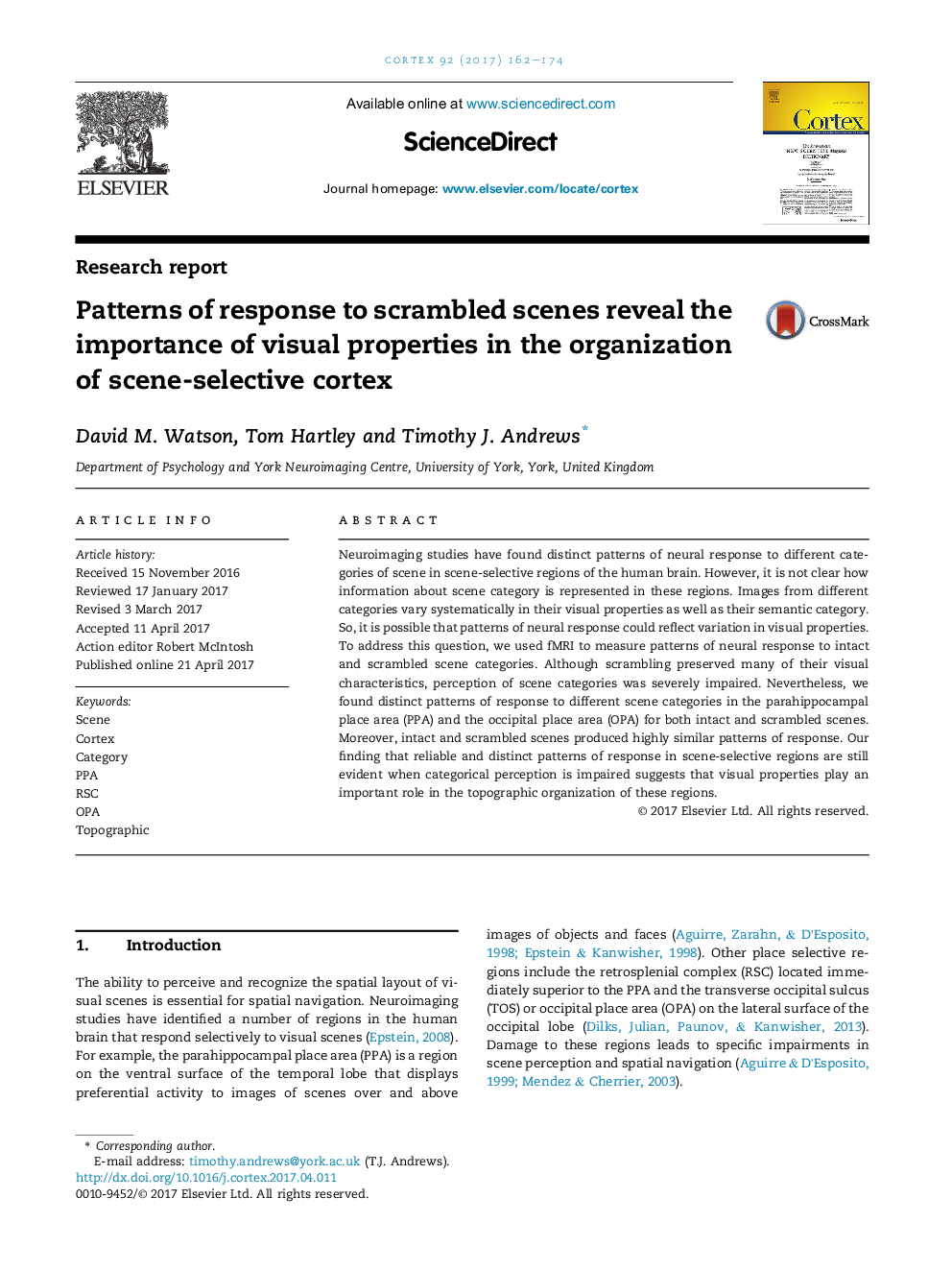| Article ID | Journal | Published Year | Pages | File Type |
|---|---|---|---|---|
| 5044500 | Cortex | 2017 | 13 Pages |
Neuroimaging studies have found distinct patterns of neural response to different categories of scene in scene-selective regions of the human brain. However, it is not clear how information about scene category is represented in these regions. Images from different categories vary systematically in their visual properties as well as their semantic category. So, it is possible that patterns of neural response could reflect variation in visual properties. To address this question, we used fMRI to measure patterns of neural response to intact and scrambled scene categories. Although scrambling preserved many of their visual characteristics, perception of scene categories was severely impaired. Nevertheless, we found distinct patterns of response to different scene categories in the parahippocampal place area (PPA) and the occipital place area (OPA) for both intact and scrambled scenes. Moreover, intact and scrambled scenes produced highly similar patterns of response. Our finding that reliable and distinct patterns of response in scene-selective regions are still evident when categorical perception is impaired suggests that visual properties play an important role in the topographic organization of these regions.
